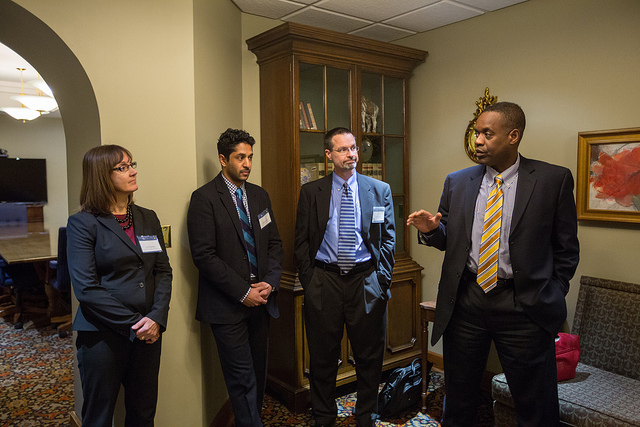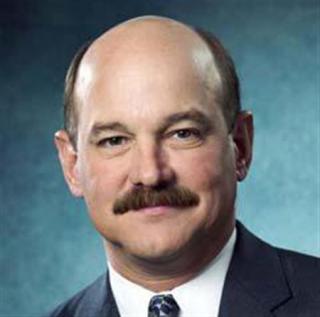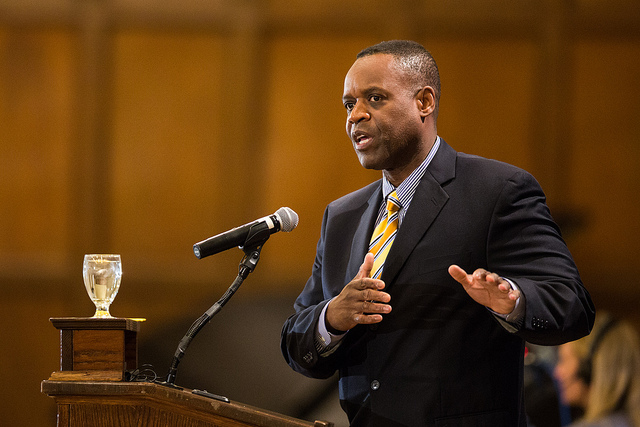A movement is taking hold in California that encourages state and local governments to divest in companies that hold the largest reserves of oil, natural gas and coal.
Over two-dozen California cities—Oakland, Richmond, Berkeley, San Francisco and Santa Monica among them—have already made plans to divest from such companies. Now, the mayors of Berkeley, Oakland and Richmond are publicly asking CalPERS to follow them. From an Op-Ed published by the mayors in the Sacramento Bee:
As elected officials, we believe our investments should instead support a future where residents can live healthy lives without the negative impacts of climate change and dirty air. It’s time for CalPERS to take our public pension dollars out of dirty fossil fuels and reinvest in building a clean energy future, for the sake of our health, our environment and our children.
In actuality, there are more than morals at play here. The value of fossil fuel investments, and by extension CalPERS’ portfolio, may be at risk as well. From the Sacramento Bee:
The International Energy Agency has concluded that “no more than one-third of proven reserves of fossil fuel can be consumed prior to 2050” if the world is to limit global warming to 2 degrees Celsius. That goal “offers the best chance of avoiding runaway climate disruption.”
That means if the world’s governments take responsible action to prevent climate catastrophe, fossil fuel companies will have to leave some 75 percent of their reserves in the ground. These companies are valued by Wall Street analysts on the basis of their reserves. Meanwhile, fossil fuel companies continue to spend hundreds of billions of dollars on exploration for new reserves. A growing “carbon bubble” – overvalued companies, wasted capital and stranded assets – poses a huge risk to investments in fossil fuels.
CalPERS holds almost $10 billion in major fossil fuel company stocks and recognizes this financial risk. It recently adopted “investment beliefs” that include consideration of “risk factors, for example climate change and natural resource availability, that emerge slowly over long time periods, but could have material impact on company or portfolio returns.”
There’s actually precedent for pension funds following social movements and divesting in certain companies. In the 1980’s many funds divesting from companies doing business in South Africa as a way of protesting Apartheid—in that instance, California funds pulled nearly $10 billion worth of investments.
And it happened again last year, when numerous funds (including CalSTRS) divested from gun manufacturers in the wake of several school shootings.
But this time, CalPERS doesn’t appear to be interested in divesting from fossil fuel companies. The fund’s senior portfolio manager Anne Simpson addressed the issue in an editorial in the Sacramento Bee:
We all have a shared concern with climate risk, but our view is that the solution lies in engaging energy companies in a process focused on finding solutions, rather than walking away.
We at CalPERS talk to more than 100 companies on an annual basis to ensure the high standards of corporate governance that underpin effective climate change risk management, and we invest in climate change solutions across our global equity, private equity and real estate portfolios.
CalPERS was a founding member of the Investor Network on Climate Risk, a leading group of 100 institutional investors representing more than $10 trillion in assets, addressing a policy agenda that calls on governments and regulators to introduce carbon pricing and disclosure, so that risks can be tackled effectively.
CalPERS is also actively collaborating in the Carbon Asset Risk Initiative, led by the nonprofit Ceres, which draws together 70 global investors managing more than $3 trillion in assets. The initiative asks 45 large oil and gas, coal and electric power companies – including ExxonMobil, Royal Dutch shell, BHP Billiton, Rio Tinto and Vale – to assess the financial risks climate change poses to corporate business plans.
Of course, there is some evidence that divesting doesn’t actually accomplish the social goals these funds have in mind when they pull their money from companies. Liz Farmer at Governing explains:
There’s no proof that divesting actually effects change. In fact, a 1999 study concluded that apartheid-related pension divestments had no significant financial impact on companies doing business in South Africa.
What’s worse, targeting investments based on social causes has proven to be dangerous for pension plans. In 1983, a study found that 10 states that had targeted investments in mortgage-backed securities as a way of encouraging homeownership either inadvertently or deliberately sacrificed returns. In some cases, they gave up as much as 2 percent in returns all for the goal of making homeownership more accessible. In 1990, Connecticut’s pension fund bought a 47 percent interest in Colt Industries in an attempt to protect Connecticut jobs. The firm went bankrupt two years later and the fund lost $25 million.
This will be an interesting story to watch play out. CalPERS will likely come under scrutiny no matter what they decide to do. In any case, any investment decision that results from this campaign should be transparent and financially sound. Pension360 will keep you updated on future developments.









